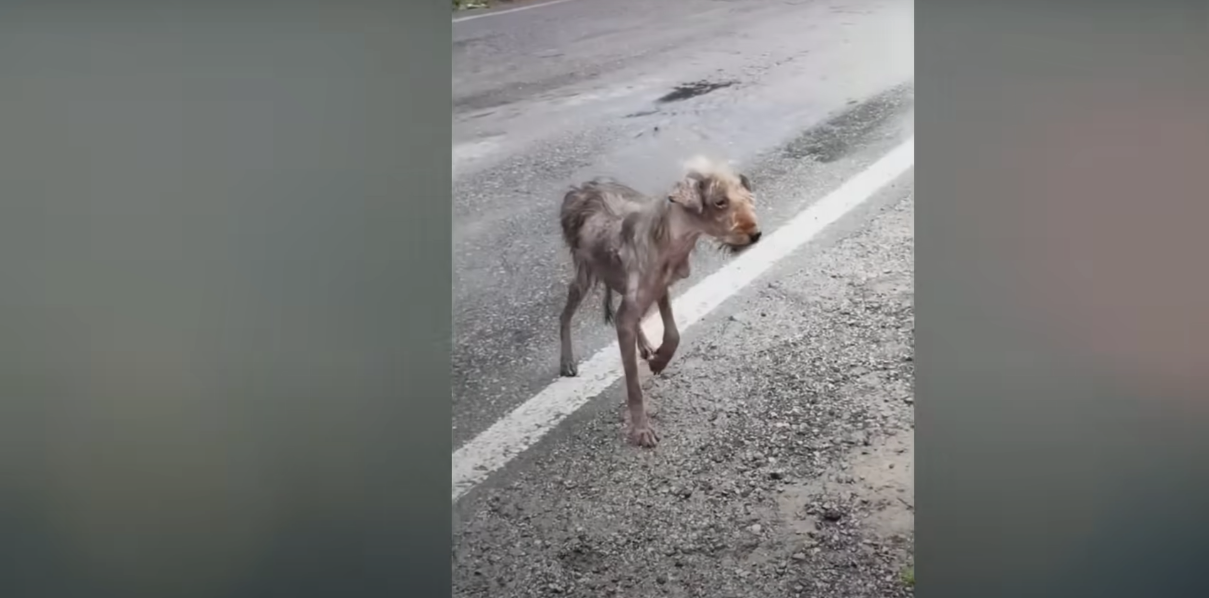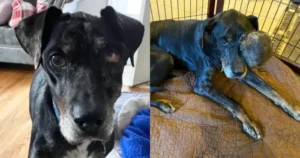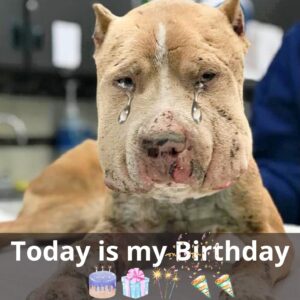A Desperate Chase for Food and Hope
It began with a simple cry for help—a dog limping after us, her eyes pleading for something as basic as food. At first, we were startled.
Her appearance was shocking: matted fur, hunched posture, and a body weighed down not just by pain, but by a lifetime of fear and rejection.
This wasn’t just a stray dog. This was a soul who had endured far more than most of us ever will.
We soon noticed she was limping—one of her legs had clearly been injured. But there was no sign of recent trauma. Whatever had happened to her, it wasn’t new. She had lived with this pain for some time.
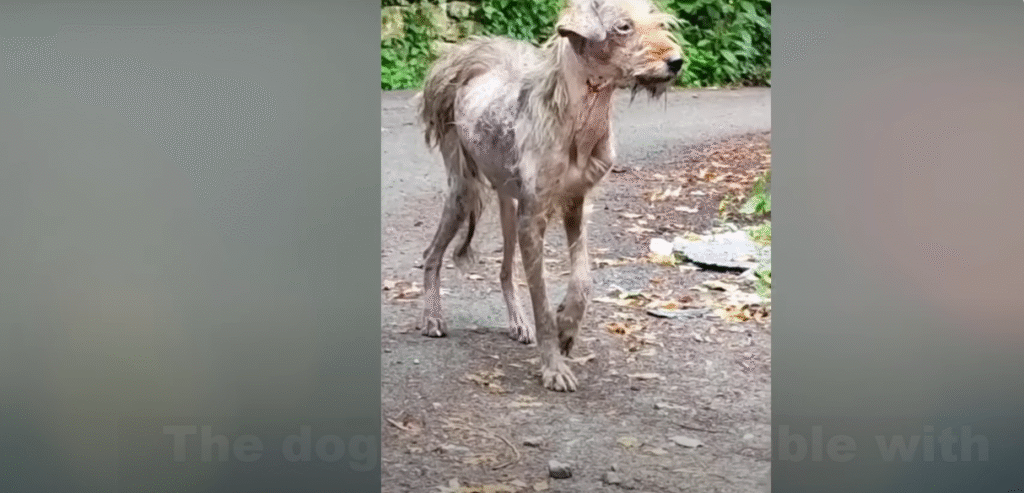
Feared, Rejected, and Alone
As we stayed longer, we realized something heartbreaking. She wasn’t unknown to the neighborhood. The people around had seen her before. They recognized her—and still, no one had helped.
In fact, wherever she went, she was pushed away. Dogs bigger than her bullied and intimidated her. Humans avoided her, repelled by her unkempt look. Her very presence was a reason for people to chase her off, as if her suffering was contagious.
The most painful part wasn’t the limp or the fleas crawling beneath her tangled fur. It was the way she flinched from every human hand.
Her fear was deeper than physical. It came from betrayal, from abandonment, from knowing that no one had ever stayed to help.
A Life Without Love
Her life up to this point had been one of quiet suffering. Hunger gnawed at her belly. She had to dig through trash and grass to fill the void.
When we eventually lifted her fur, it was crawling with fleas and ticks. She didn’t resist the first bath, but not because she trusted us—because she was too scared to fight. She was tired. Exhausted.
It took hours for her to stop trembling. It wasn’t until afternoon that she finally calmed down enough to rest.
And so began her journey—not just toward healing, but toward a life she never thought she could have.
The Long Road to Healing
The nearest clinic was 106 miles away. One of our team members stayed behind to continue learning about her story, while the rest of us focused on getting her medical help. Every plan we had was put on hold for her.
When we looked into her eyes, our hearts broke. There were tears—literal tears—falling down her cheeks. That pain, that silence, that helplessness… it shattered us.
At the clinic, the doctors found a wound on her neck, possibly caused by a sharp object. Her stomach was filled with trash and grass—clear evidence of how long she had been scavenging for survival.
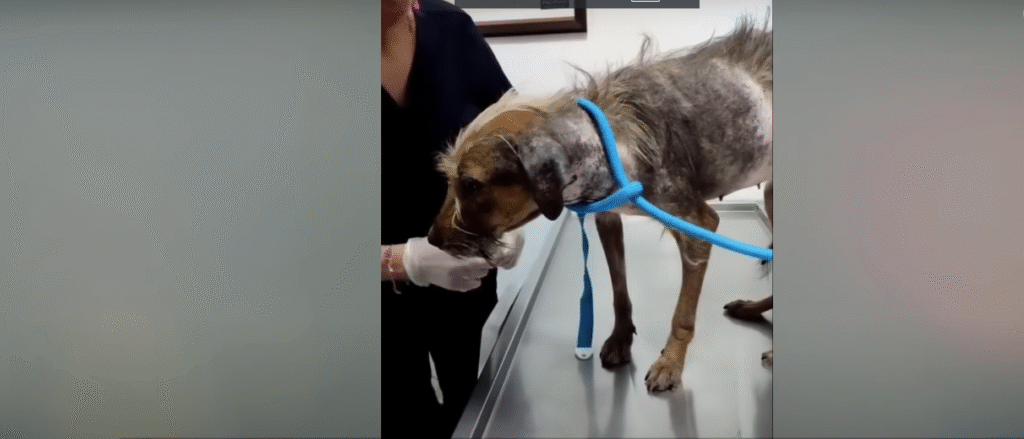
Source: Youtube
A Hidden Injury, A History of Pain
On the fifth day, we were still concerned about her limp. At first, she couldn’t bear any weight on that leg. When she stood, she shook with pain.
But after careful examination, the vet confirmed that the leg wasn’t broken, just healing very slowly.
What caused the injury? Not a car, they said. Most likely, it had been done with a stick. A deliberate blow. Another scar in her long list of betrayals.
No wonder she was so timid, so afraid of every stranger. Even a friendly gesture would send her into a panic. She would shake. She would urinate out of fear. Gaining her trust was going to take time—maybe months.
Glimmers of Hope
But hope is resilient, even in the most broken hearts.
Two weeks passed, and we began to see real changes. Her coat grew softer. Her skin became less irritated.
Her eyes—those same sad eyes—began to shine with curiosity instead of fear. She would look at us and not flinch. She would sit beside us without trembling.
She gave us faith. Her progress was slow, but every step forward was a miracle. She began to eat properly. Her digestive issues resolved on their own.
The trash was no longer in her stomach. Her fur began to grow back. And, most importantly, the fear started to vanish.
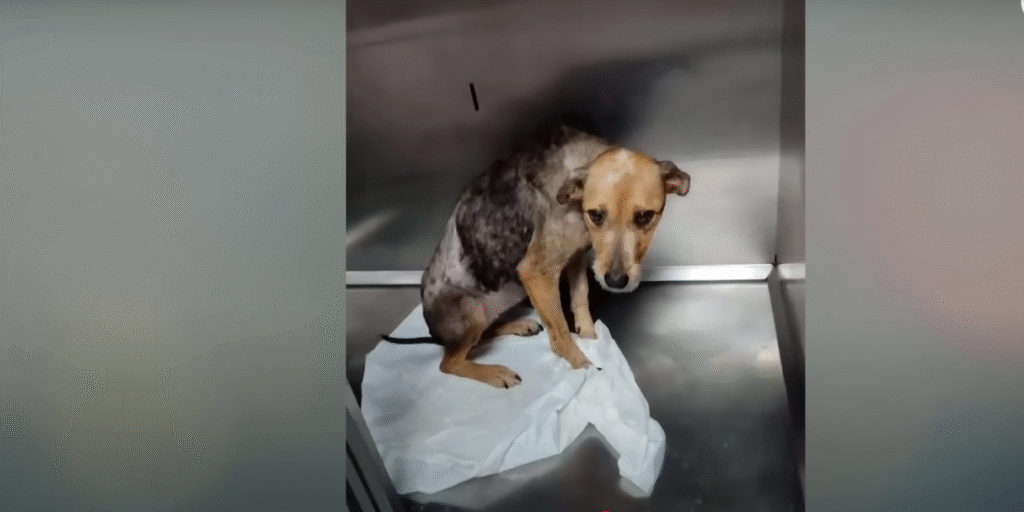
Source: Youtube
A Name, A New Identity
We gave her a name: Nazli, the shy girl. It suited her. But soon, even that label began to feel outdated. She wasn’t just shy anymore. She was gentle, loving, and slowly learning to trust again.
Nazli began to follow us with love in her eyes. She enjoyed cuddles and playtime. She no longer saw hands as threats—but as comfort.
She became the kind of dog who seeks out your lap, who melts into your arms. Her transformation was astonishing.
The Truth of Her Past
Then, we learned the truth. People in the area knew her. She had once belonged to someone. Her owner had left her in the village—abandoned her while she was sick.
She wasn’t just a stray. She had known a home once, only to be thrown away when she needed care the most.
To make things worse, children in the area used to mock her, tease her, and hurt her. That limp, that wound, the constant fear—it all made sense now.
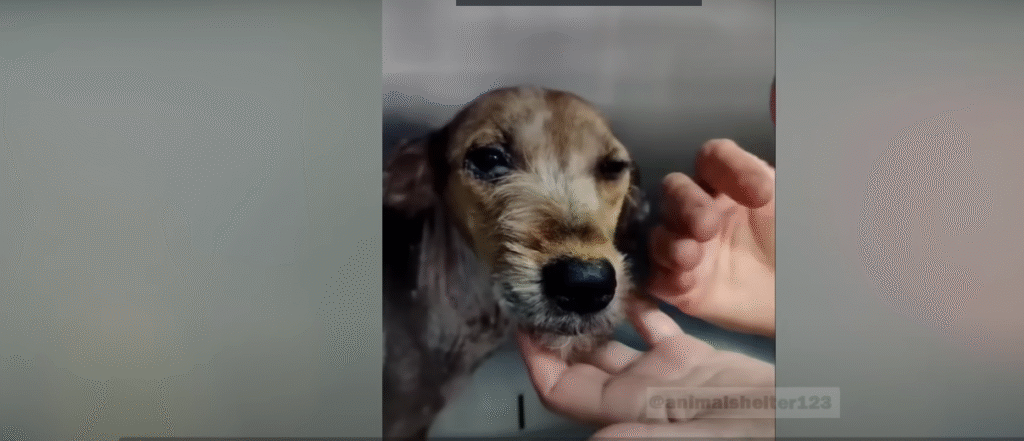
Source: Youtube
A New Home, A New Chapter
But Nazli didn’t let her past define her future.
She forgot the cruelty. She let go of the trauma. Instead, she embraced a new life, one where love replaced pain. One where she didn’t have to flinch at every noise.
Nazli was finally adopted. Not just by anyone—but by a family who passed every check, who had a long history of loving and caring for animals. We made sure her new home would never repeat her past.
And what a transformation it was. She now sleeps in a warm bed, plays freely, and is showered with affection. Her adopters couldn’t believe the life she’d lived before. And neither could we.
From Suffering to Joy
Nazli’s story is one of pain, yes—but also of overwhelming resilience. From a scared, limping, rejected stray… to a beloved member of a family.
She fought through unimaginable pain, and she found light on the other side.
She smiles now. She plays. She’s cherished.
This isn’t just a rescue story. It’s a reminder—that every life matters. That behind every pair of frightened eyes, there might be a soul like Nazli’s… just waiting for a second chance.
And when we give them that chance, the rewards are beyond words.
